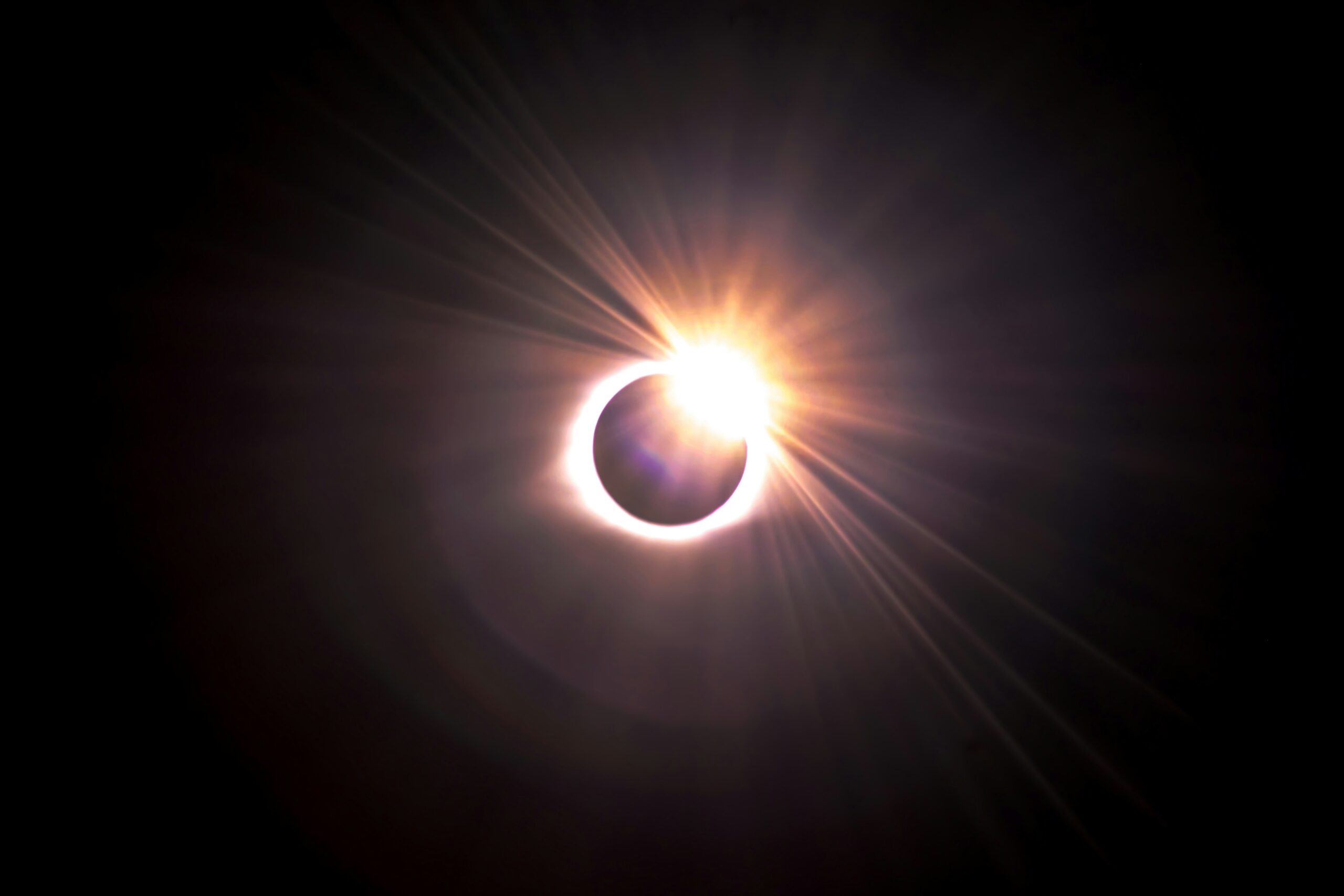The desert air grows still. Under the relentless Egyptian sun, temperatures hover near 43°C (109°F). Suddenly, an unnatural twilight descends. Shadows sharpen into knife edges. Birds fall silent. As the last sliver of sunlight vanishes behind the Moon, day transforms into night—and for 6 minutes and 23 seconds, the Sun’s ethereal corona blazes in a blackened sky. This is no ordinary eclipse. On August 2, 2027, the “Great African Eclipse” will carve a path of totality across three continents, offering the longest period of total darkness on land witnessed by humans since 1991—and unmatched until 2114.
Why This Eclipse is the “Event of the Century”
- Unprecedented Duration:
Most total solar eclipses offer 2-3 minutes of totality. The 2027 event shatters records, lasting over six minutes at its peak near Luxor, Egypt. This extraordinary length results from a cosmic trifecta:- Earth at aphelion (farthest from the Sun, making the solar disc appear smaller)
- Moon at perigee (closest to Earth, enlarging its apparent size)
- The shadow’s path crossing near the equator, where Earth’s rotation slows the moon’s shadow drift. Explore the full orbital mechanics in NASA’s 2027 Eclipse Path Analysis.
- A Path Through History and Desert Skies:
The 258-km-wide shadow band will traverse Spain, Morocco, Algeria, Tunisia, Libya, Egypt, Saudi Arabia, Yemen, and Somalia. Prime locations combine archaeological grandeur with near-perfect visibility:- Luxor, Egypt (6m 22s): Totality at 1:02 p.m. EEST over Karnak Temple and the Valley of the Kings. Egypt’s cloud-free probability exceeds 99%—though searing heat demands precautions.Tangier, Morocco (4m 50s): Where the Atlantic meets the Mediterranean, blending cultural richness with coastal accessibility.Tarifa, Spain (4m 39s): Europe’s southern tip offers a unique dual-continent viewing perspective.
- Back-to-Back Celestial Events:
Spain achieves a rare trifecta:- Total Eclipse (August 12, 2026)
- This Total Eclipse (August 2, 2027)
- Annular Eclipse (January 2028)
Where and When to Experience Totality
| Location | Totality Duration | Local Time | Sun Altitude | Key Features |
|---|---|---|---|---|
| Tarifa, Spain | 4m 39s | 10:45 a.m. CEST | 37° | Coastal views, Strait of Gibraltar |
| Tangier, Morocco | 4m 50s | 09:44 a.m. WEST | 37° | Cultural fusion, historic medinas |
| Sfax, Tunisia | 5m 41s | 10:08 a.m. CET | 56° | Mediterranean coastline |
| Benghazi, Libya | 6m 07s | 11:27 a.m. EET | 67° | Less tourist-dense |
| Luxor, Egypt | 6m 21s | 1:02 p.m. EEST | 82° | Near Valley of the Kings, max duration |
| Jeddah, Saudi | 6m 02s | 1:22 p.m. AST | 77° | Red Sea backdrop |
Source: NASA Eclipse Path Tables and Eclipsophile Weather Analysis
Pro Tip: While Luxor offers the longest totality, consider Sohag, Egypt (6m 22s) for fewer crowds. Cruise ships in the Mediterranean also provide mobility to evade clouds.

Weather Prospects: Chasing Clear Skies
- Egypt/Libya: Near-zero cloud risk (<1%), but intense heat and dust haze possible. Temperatures may plummet during totality.
- Spain/Morocco: ~30% cloud risk. Gibraltar’s “Levanter cloud” often shrouds the Rock in fog—position east or west to avoid it.
- Saudi Arabia/Yemen: Cloud cover increases toward the Indian Ocean. Jeddah’s coastal location improves odds.
“There is no chance of cloud in eastern Libya and western Egypt. At Luxor, cloud cover frequency is 0.7%—you might see thin cirrus, but the real variable is dust.” — Jay Anderson, Eclipsophile.
Navigating Challenges: Heat, Logistics, Safety
- Extreme Conditions: Desert sites like Luxor face midday temperatures exceeding 40°C (104°F). Hydration, shade, and cooling accessories are essential.
- Cultural Considerations: In Saudi Arabia, respect local customs. Mecca’s eclipse (5m 10s) will draw millions—plan accommodations early.
- Eye Safety: Use ISO 12312-2 certified glasses during partial phases. Totality is safe to view naked-eye, but never look at the uneclipsed Sun without protection.
Why This Eclipse is a Generational Opportunity
No living person has seen a totality this long on land, and none will again until June 3, 2114. Beyond its scientific value—studying the Sun’s corona, ionospheric disruptions, and animal behavior—the event connects humanity across continents. Imagine standing amid Luxor’s 3,400-year-old temples as day becomes night, joining millions from Madrid to Mecca in shared awe.
As eclipse chaser Jamie Carter notes:
“You can travel the world for waterfalls or auroras—but an eclipse comes to you. It’s the universe’s greatest spectacle, and 2027 is its magnum opus.”
Plan Your Journey Now
- Accommodations: Luxor hotels are already booking for 2027. Consider Nile cruises or Red Sea resorts like Marsa Alam.
- Tours: Reputable operators like Memphis Tours offer eclipse-centric trips to Egypt and Morocco.
- Transport: Fly into Málaga (Spain), Cairo (Egypt), or Tangier (Morocco). Car rentals provide path flexibility.
Check Interactive Eclipse Timing Maps for precise local viewing details.
Final Insight: Spain’s 2026–2028 eclipse trilogy makes it a unique base. Combine the 2027 event with the 2026 totality (Greenland/Iceland/Spain) for a “double-eclipse” journey.
The Ultimate Cosmic Spectacle
The 2027 total solar eclipse transcends astronomy. It’s a pilgrimage into shadow, a testament to celestial mechanics, and a shared human moment stretched across six minutes of profound wonder. As the Times of India declares, this is the “once-in-100-years phenomenon” you cannot miss. Mark August 2, 2027, in bold—and prepare to meet the universe’s grandeur.
“For six minutes, the world will not be what it was.” — Zee News India.
